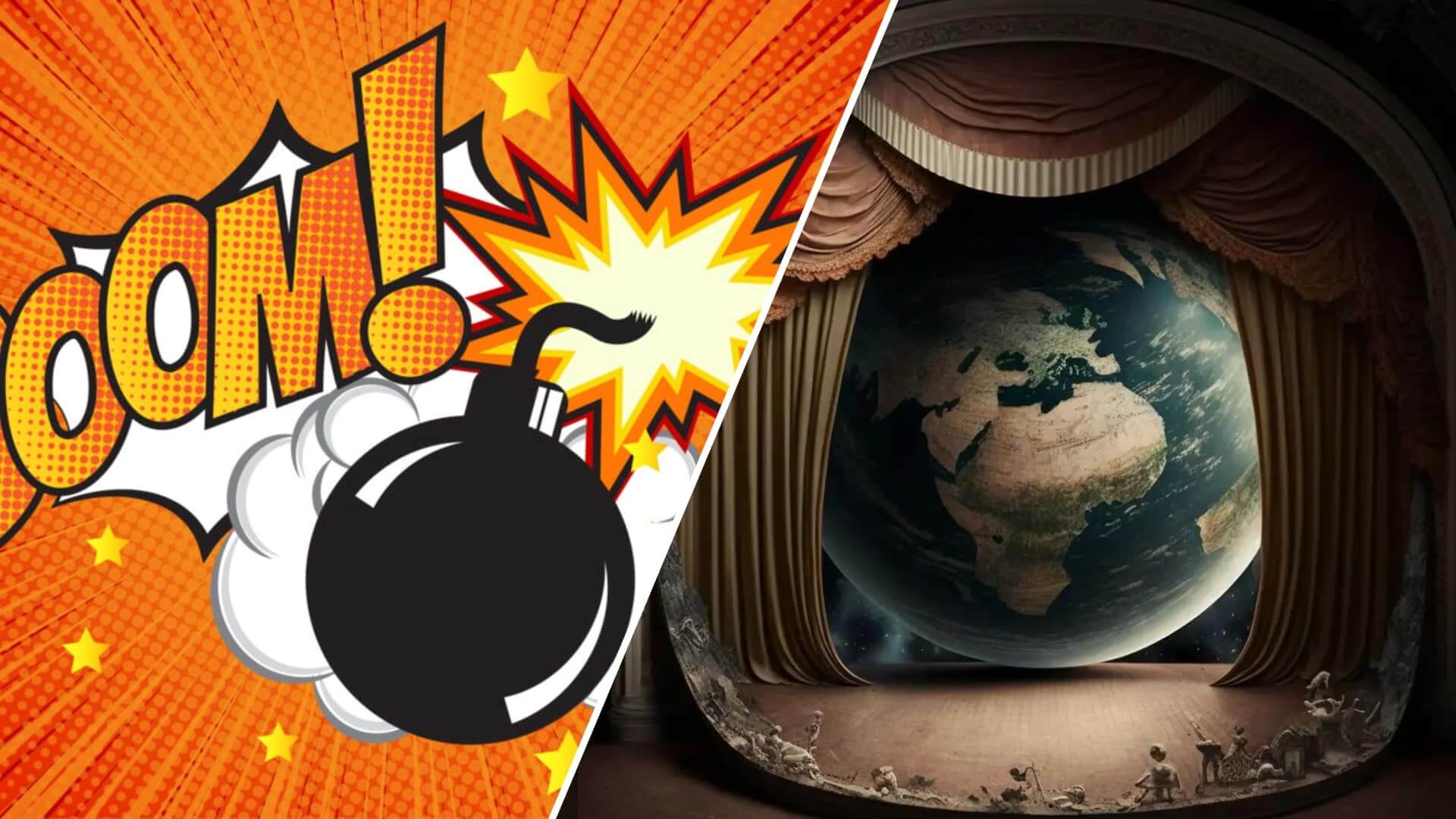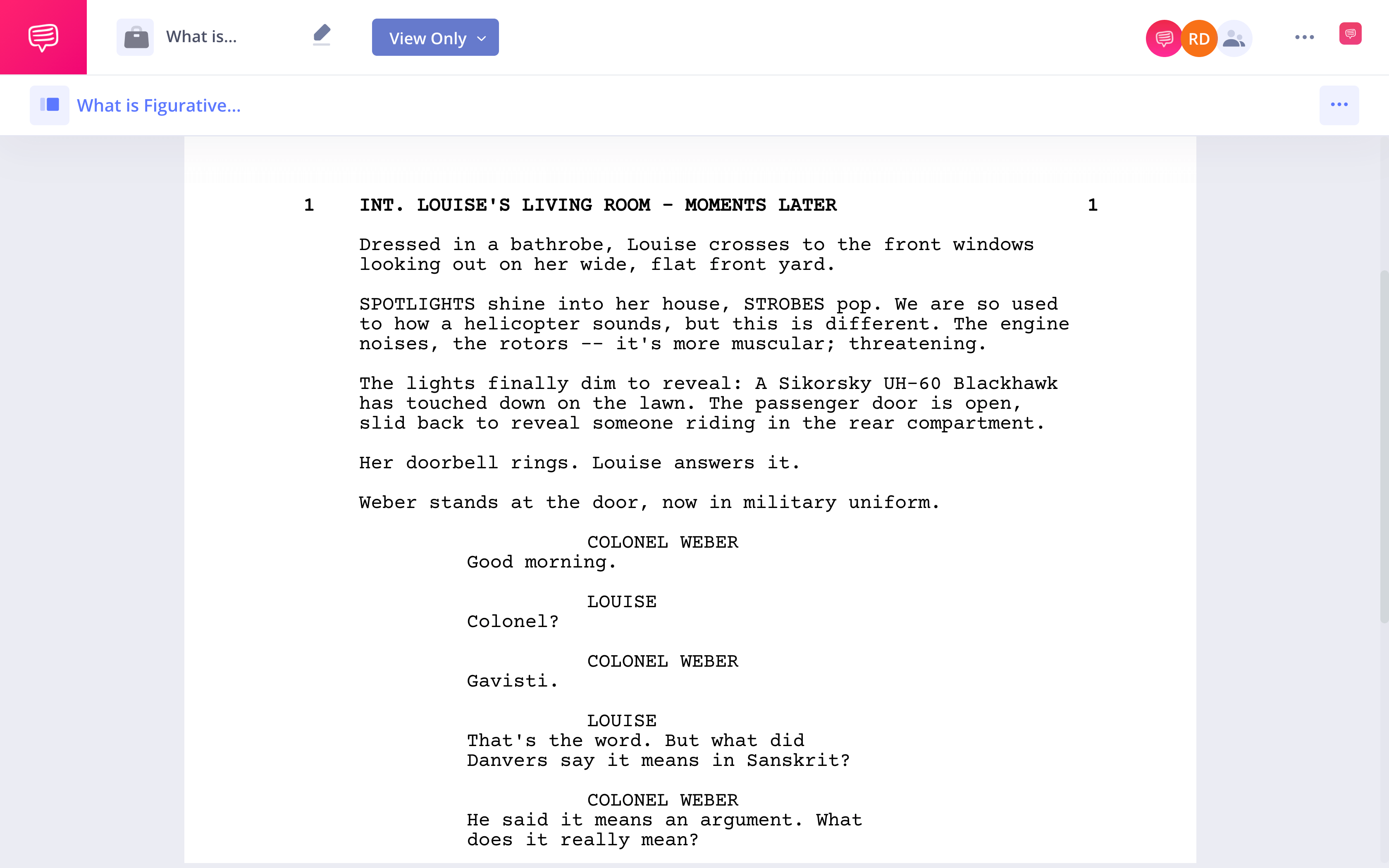The world would be a lot more boring without figurative language. Look at your favorite novel, essay, monologue, script– you’re guaranteed to find at least a few figurative language examples. But what is figurative language? And what are its different types? We’re going to answer those questions by outlining a figurative language definition alongside a myriad of examples. Now, let’s define figurative language, see what forms it can take, and how it can be used!
Define Figurative Language
What does figurative language mean?
Because there are so many types of figurative language, it can be hard to nail down a precise definition. But having an umbrella definition for the term is key to understanding its multitude of uses. So, what is figurative language?
FIGURATIVE LANGUAGE DEFINITION AND EXAMPLES
What is Figurative Language?
Figurative language is when words are used in a capacity beyond their literal meaning, often in order to strengthen a point or description. In other words, figurative language is language that conveys a message without explicitly saying it.
What Is Figurative Language Definition And Examples
Types of Figurative Language
What does figurative language mean? Figurative language is a necessary concept to understand for any aspiring screenwriter, or, really, anyone who writes at all. Figurative language doesn’t have to make your writing overly-flowery or opaque; in fact, it can do the opposite. Figurative language can clarify your point, illustrate your scenery, or solidify your character in just a few words.
Still unsure if you have a good grasp on the figurative language definition? Fear not– like a lot of concepts, figurative language can be most easily understood by seeing it in action. Let’s look at some of the most common types of figurative language.
Metaphor
A metaphor is an implied comparison between two unlike concepts. It can be a great way to quickly describe something without a ton of adjectives.
Figurative language examples of metaphors:
- “The office is a hornet’s nest.”
- “He was a wild animal on the court.”
- “Love is a Battlefield.” – from Pat Benatar’s song; compares love to a battlefield
Simile
A simile is a figure of speech that makes a comparison by using “like” or “as.”
Figurative language examples of simile:
- “She’s like a robot.”
- “He was as cool as a cucumber.”
- “Life is like a box of chocolates.” – from Eric Roth’s screenplay Forrest Gump, based on Winston Groom’s novel of the same name; compares life to a box of chocolates by using “like”.
Personification
Personification is a type of figurative language that gives human-like characteristics to inanimate objects, which can be helpful when trying to add emotion and imagery to scenes without people.
Figurative language examples of personification:
- “Minutes crawled by.”
- “The tractor wheezed.”
- “The grey-ey'd morn smiles on the frowning night, Check'ring the Eastern clouds with streaks of light.” – from William Shakespeare’s play Romeo and Juliet; uses personification to illustrate the passing of time from night (frowning) to day (smiling), which adds mood and character to the setting.
Hyperbole
Hyperbole is a type of figurative language that uses extreme and purposeful exaggeration. It can be great for heightening your writing for comic or persuasive effect.
Figurative language examples of hyperbole:
- “The line was a mile long”
- “I’m so hungry I could eat a horse”
- It was the best of times, it was the worst of times.” – from Charles Dickens’ novel A Tale of Two Cities; uses hyperbole to create a diametric contrast between two exaggerated states: “best” and “worst.”
Idiom
An idiom is a common expression that has a meaning beyond what it literal definition. Idioms should be used sparingly, as they are by definition clichés.
Figurative language examples of idiom:
- “The apartment cost an arm and a leg.”
- “We’ll cross that bridge when we get there.”
- “Can't learn an old dog new tricks, as the saying is.” – from Mark Twain’s novel The Adventures of Tom Sawyer; uses an idiom to suggest some people can’t change.
Related Posts
Onomatopoeia
Onomatopoeia refers to words that sound like what they are describing.
Figurative language examples of onomatopoeia:
- Bang.
- Whoosh.
- “He saw nothing and heard nothing but he could feel his heart pounding and then he heard the clack on stone and the leaping, dropping clicks of a small rock falling.” – from Ernest Hemingway’s For Whom the Bell Tolls; Hemingway uses “clack” and “clicks” to add to our auditory senses in the passage.
Euphemism
A euphemism is a word or collection of words that are used to talk around something harsh or explicit. These are often used when someone is uncomfortable talking about a subject or is trying to be polite, which makes them great for comedy.
Figurative language examples of euphemism:
- “She was put out to pasture.”
- “I heard the two of them did the deed.”
- “It’s really an awfully simple operation… it’s just to let the air in.” – from Ernest Hemingway’s short story “Hills Like White Elephants” using euphemism to describe an abortion
Figurative language in poetry and prose can add style and flair. When in doubt, reference the figurative language definition and examples above. Now, let’s look at how to write figurative language.
Related Posts
What Is Figurative Language Meaning
How to Write Figurative Language
Figurative in literature is perhaps the most common form of figurative language. However, figurative language can also be found in poems, screenplays, and more.
Use figurative language sparingly
What is the purpose of figurative language? The purpose of figurative language is to add flavor and imagery to your writing. Like with most good things, it’s best not to overuse it. Figurative language should always clarify your meaning and add an element of style that wouldn’t be there otherwise.
Consider the reader
It’s important to consider the reader when writing figurative language. Will they understand the meaning? Or will the intent be lost on them? Idioms may sound insane to non native speakers. Imagine hearing “we have to address the elephant in the room” without knowing it has figurative meaning? What elephant? In which room?!
Master understatement and overstatement
Figurative language can effectively be used as a tonal tool to either underplay or overplay the severity of a situation. For example: you might use understatement to say “‘tis but a scratch” when you’ve actually suffered a grievous injury. Or you might use overstatement to say you’re the king of the world when you’re really just standing on the bow of a ship.
But what does figurative language look like in a screenplay? Eric Heisserer’s script for Arrival – which we imported into StudioBinder’s screenwriting software – contains a great example of figurative language.
Take a look at this passage, where Louise is being approached by the military to help with communicating with aliens. Can you spot the personification?
What is Figurative Language Used For? • Check Out the Arrival screenplay
The personification here is subtle but effective. Heisserer describes the sound of the helicopters as “muscular,” a trait a sound can’t literally have. But it delivers the point: these choppers aren’t messing around.
Next time you’re writing, make note of your use of figurative language. If your writing lacks it, ask yourself: could I illustrate my point better with a metaphor? Some personification? An idiom? If you’re using a lot of figurative language, it’s best to ask: what is this serving? Am I clarifying my point? Or obscuring it?
Keeping figurative language techniques in mind will make you a more deliberate, thoughtful, and effective writer.
Related Posts
Up Next
What are Literary Devices?
We’ve answered “what is figurative language?” and “what are the 7 types of figurative language?” so now let’s answer a related question: what are literary devices? Read up on some great literary devices that can help take your pen game to the next level. We go through a ton of different devices, and provide examples to help you understand their use.

